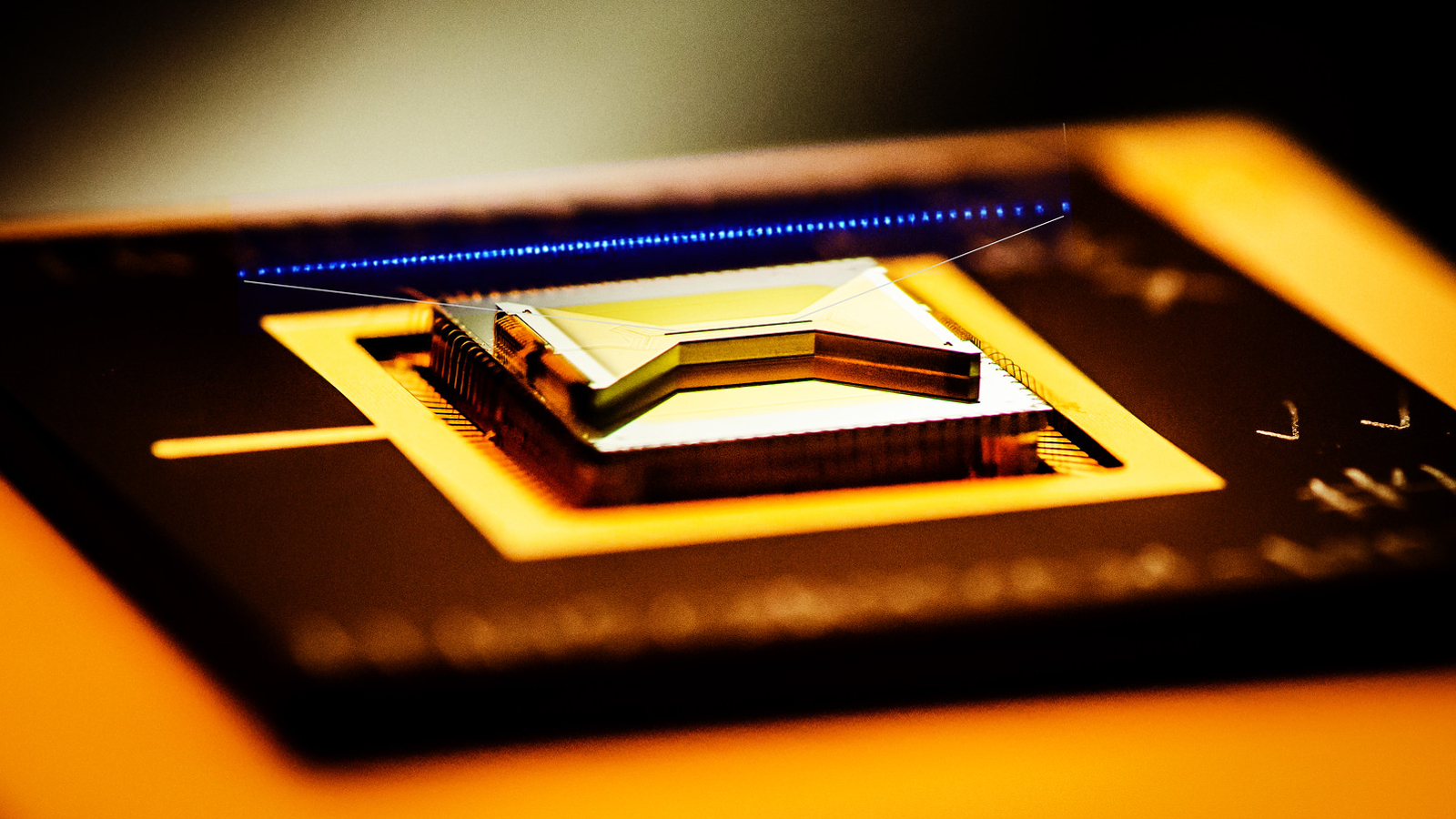
‘More Possibilities Than There Are Particles in the Universe’
Duke Building a World-Class Team for the Quantum Computing Race
New one-year, $1 million pilot project is the first step toward increasing the United State’s quantum infrastructure

Researchers at the Duke Quantum Center are embarking down an ambitious road to engineer the most powerful quantum computer in the world. If all goes to plan, the collaboration could become the first to demonstrate a quantum system that can outperform a classical computer for a range of scientific applications.
The effort was recently set in motion by a one-year, $1 million grant from the National Science Foundation’s National Quantum Virtual Laboratory (NQVL) program. Along with the pilot program headed by Duke, NQVL is funding four other pioneering projects designed to enable faster discovery and development of use-inspired quantum technologies.
“The NSF National Quantum Virtual Laboratory represents a new approach NSF is taking to facilitate the complex and multistep process of translating new scientific ideas into fully developed technologies that benefit society,” says acting NSF Assistant Director for Mathematical and Physical Sciences Denise Caldwell.
Called the Quantum Advantage-Class Trapped Ion system (QACTI), the quantum computer being pursued by the Duke-led group builds on foundations laid through the Software-Tailored Architectures for Quantum co-design (STAQ) project. Originally funded with $15 million by the NSF in 2018, STAQ was recently renewed in 2024 with an additional $17 million in funding through 2029. It also builds on work conducted through the University of Chicago’s Enabling Practical-scale Quantum Computing (EPiQC) Expedition, of which Duke is also a part.
These grants have supported researchers working to build quantum computers through qubits made from trapped ions. Each qubit is analogous to a single bit in a classical computer, but with much more dexterity and power. Because qubits can be both a 1 or a 0 at the same time, they have the potential to solve complex problems that classical computers never could.
“The STAQ program team has already tested many ion trap designs and controls systems, achieving control of a chain 23 qubits long with plans to soon reach more than 50,” said Ken Brown, the Michael J. Fitzpatrick Distinguished Professor of Engineering at Duke and the leader of the new QACTI program. “This new funding will allow us to work with the broader community to identify technical challenges and potential solutions with the goal of starting construction of a 256 qubit machine in 2026.”
Joining Duke in this quest are original STAQ collaborators from the University of Chicago, North Carolina State University and Tufts University. The NQVL project also includes new collaborations with North Carolina Agricultural and Technical State University to strengthen their expertise on control systems and to help shape the group’s workforce development plans.
While the NQVL grant may seem small when compared to previous quantum-related grants, it holds the potential to grow into a much larger effort than STAQ. After the first phase is complete, participants have the opportunity to proceed to future funding rounds focused on design and implementation and a potential increase in budget up to $10 million per year.
As these five projects mature alongside another five expected to be announced later this year, those chosen for additional funding will grow together and serve as a federated resource, bringing together assets that will enable a diversity of quantum-focused research and development.
NQVL will broaden access to specialized research infrastructure by functioning as a geographically distributed national resource. NQVL will grow and adapt to seize emerging opportunities and accelerate the translation of fundamental science and engineering into practical applications codesigned by a broad and diverse user community that spans computing, networking and sensing.
“U.S. competitiveness hinges on accelerating the translation of technological innovations into the market and society, as well as training the American workforce for the jobs of tomorrow,” said Erwin Gianchandani, NSF assistant director for Technology, Innovation and Partnerships. “Through NQVL, NSF will invest in resources that will allow for research and experimentation of novel quantum technologies, opening new opportunities across a range of disciplines from new material discovery to health care interventions, all while providing critical workforce development opportunities to fill the quantum jobs anticipated over the next decade.”

Duke Building a World-Class Team for the Quantum Computing Race

Duke researchers show for the first time that an assembly of quantum computing pieces can be better than the worst parts used to make it

The university offers an accessible entry into quantum computing through a House Course designed for undergraduate students that is also conducted by the Duke Undergraduate Quantum Information Society (DuQIS)